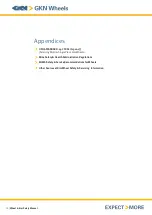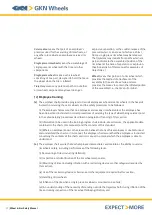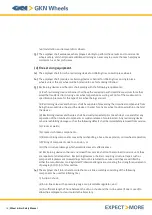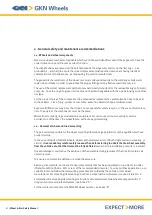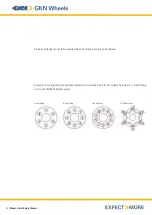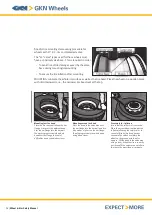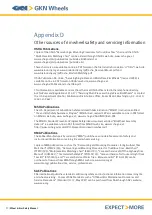
89 |
Wheel & Rim Safety Manual
2.4 - Mounting of tire onto wheel rim
This operation must be carried out by trained personnel only.
Be sure that the rim size and diameter are the right ones for the tire to be mounted.
Inspect the wheels and its components to verify that all parts are in good condition.
Do not use damaged, worn out, or cracked parts and do not try to repair them.
Do not fit an inner tube to a tubeless tire to overcome a problem of air leakage.
Check all matching surfaces, i.e., hub, studs, nuts, disc attachment face -- and in case of multi-piece rims all
contact surfaces for a correct ring seating -- removing dirt, rust, scratches, and other similar surface defects.
To clear such surfaces, hand or electric wire brushes or sand blasting may be used.
In particular, drop center rims fitted with tubeless tires must have the bead seat areas free from rust and
rubber deposit, in order to ensure air-sealing.
Especially for tubeless tires, inspect the valve and replace the stem, if necessary.
Use a neutral non-aggressive mounting paste to lubricate the outside of both rim seats and tire beads.
Do not use solvent-based lubricants as these could damage the tire, nor starting flammable fluids to
lubricate or seal the beads.
On wheels with drop center rims (single piece), place the tire over the small bead seat side of the rim,
push the lower bead over the rim flange and then, progressively, into the rim well. Using the first lever to
keep in place the upper tire bead, work by short steps with the second lever to complete the fitting of the
tire -- see picture No. 4.
On the multi-piece rims, the correct positioning of the removable 'kombi' ring or of the side/lock rings
has to be carefully checked prior to inflation and later on after having applied about 0.3-0.5 bar of air
pressure. Never stand in front of the wheel.
An inflated tire, even with low air pressure, must never be worked on with a hammer while trying to
correct an improper position of the rings. In such a case, all air has to be let out of the tire before the
necessary correction can be done.
For detailed instructions concerning the tire mounting/demounting on commercial vehicle wheels having
15° drop center rims and protected valves, see Annex "A".
For the TRILEX® wheel system, refer to Annex "B".
To complete the tire inflation use a "safety cage", designed with suitable strength -- see picture No. 5 -- or
at least put safety chains around the wheel, always avoiding to stay in the potentially dangerous areas.
Particular precaution must be taken by the operator, and any other people present whenever handling an
inflated tire/wheel assembly or while checking the pressure of a tire mounted on the vehicle, and never
to remain in front of the wheel. This especially if it is a large dimension with high inflation pressure -- see
picture No. 6.

